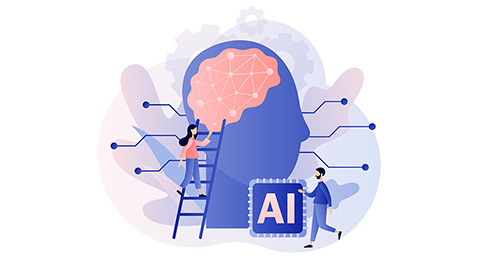A Comprehensive Guide To Machine Learning And Cybersecurity In SaaS
Machine learning and cybersecurity convergence have become increasingly essential in our digital era. Machine learning, a subset of artificial intelligence, involves the development of algorithms that can learn from and make predictions based on data. Conversely, cybersecurity protects systems, networks, and data from digital attacks. The combination of these two fields offers unparalleled opportunities to enhance security in various sectors, especially in the constantly evolving landscape of SaaS (Software as a Service) applications.
Machine Learning Fundamentals
Machine learning algorithms can be broadly categorized into three types: supervised learning, unsupervised learning, and reinforcement learning. These algorithms offer different data analysis methods and can be tailored to address specific security needs. Machine learning has been applied in cybersecurity to detect threats, predict vulnerabilities, and automate real-time responses. It aligns well with the MITRE ATT&CK frameworks, which provide a comprehensive knowledge base of adversary tactics and techniques. From recognizing unusual patterns to preemptively identifying potential risks, machine learning’s capabilities in enhancing security are vast.
Cybersecurity in SaaS Challenges
Despite significant advancements, cybersecurity remains a complex field fraught with numerous challenges. Traditional methods that rely on predefined rules and human intervention often fall short in countering sophisticated cyber-attacks. The growing complexity of attacks, driven by innovative malicious techniques, exposes the limitations of conventional security measures. Today’s interconnected digital landscape presents an array of vulnerabilities that cybercriminals are eager to exploit. The threats are multifaceted and continually evolving, from phishing schemes to ransomware attacks. Organizations grapple with a fast-moving target, where static defence mechanisms can become outdated quickly.
Integration Of Machine Learning Into Cybersecurity
Machine learning algorithms can sift through large datasets to detect anomalies, making them valuable tools for uncovering hidden threats. Moreover, predictive analytics powered by machine learning can forecast potential vulnerabilities, enabling proactive measures. Integrating machine learning into cybersecurity represents a leap towards intelligent safety. Utilizing algorithms that learn from data patterns, machine learning can detect and predict cyber threats with unprecedented accuracy. This convergence transforms traditional security measures, enabling proactive defenses and adapting to the ever-evolving landscape of cyber risks. – Hari Ravichandran, CEO – Aura
Various tools and technologies, such as AI-SPM, TensorFlow and Scikit-learn, facilitate the implementation of machine learning models into cybersecurity frameworks. These tools are instrumental in building and training models tailored to specific security needs.
Ethical Considerations & Challenges
Data Privacy Concerns
Implementing machine learning in cybersecurity presents ethical dilemmas related to data privacy. The very essence of machine learning requires access to vast amounts of data to train robust models. Often, this data may include sensitive or personal information, which, if mishandled, could lead to significant privacy breaches.
Ensuring that models do not inadvertently expose or misuse sensitive information is crucial. Organizations must grapple with questions about what data to use, how to handle it, and what safeguards to implement. The drive to create more effective machine learning models must be balanced against the need to protect individual privacy and comply with relevant laws.
Compliance With Regulations
Adherence to regulations such as the General Data Protection Regulation (GDPR) is not just a legal necessity but an ethical imperative. These laws enforce strict guidelines on handling personal data, and non-compliance can lead to severe penalties. More importantly, adherence to these regulations signifies a commitment to responsible and ethical data practices.
The complexity of adhering to multiple regulatory standards across different jurisdictions adds another layer to the challenge. It requires legal expertise and a deep understanding of how machine-learning models interact with data.
Bias And Fairness
Another critical ethical consideration is the potential for bias in machine learning models. If training data reflects societal biases, the resulting models may perpetuate or even exacerbate these biases. In cybersecurity, this could lead to unfair targeting or misclassification.
Mitigating biases requires a concerted effort to understand the underlying data and the potential pitfalls in the modeling process. Collaboration between data scientists, cybersecurity experts, and other stakeholders can lead to more transparent and equitable systems.
Transparency And Accountability
The often “black box” nature of machine learning models raises questions about transparency and accountability. How do organizations ensure that these models make decisions in a way that can be understood and justified? Explaining how a model arrived at a particular conclusion, known as explainability, is vital for trust and accountability.
Best Practices For Ethical Implementation
Adopting best practices in implementing machine learning in cybersecurity is crucial in addressing these ethical considerations. It involves creating clear policies, employing robust security measures, and fostering a culture of moral awareness. Collaboration between data scientists, cybersecurity experts, legal professionals, and other stakeholders can create a holistic approach to ethical considerations. Regular audits, honest reviews, and ongoing education can also help ensure that machine learning’s integration into cybersecurity is practical, responsible, and aligned with societal values. To truly understand how AI tackles complex challenges, a machine learning course can provide insight into the algorithms and techniques behind these smart problem-solving systems.
Future Trends of Machine Learning & Cybersecurity In SaaS
- Enhanced Threat Intelligence With AI & ML: The integration of machine learning and cybersecurity in SaaS is only beginning to unfold, and the potential for further refinement is vast. Artificial intelligence (AI) and machine learning (ML) can enhance threat intelligence. These systems can identify trends and patterns by analyzing large volumes of data, more accurately predicting future threats. This predictive capability allows SaaS providers to anticipate risks and develop proactive defense strategies.
- Adaptive Security Measures: Traditional security measures often struggle to adapt to the rapidly evolving landscape of cyber threats. Machine learning offers the possibility of adaptive security, where systems can learn from new data and adjust their defense mechanisms in real-time. This agility is especially vital for SaaS platforms, where continuous updates and user interactions require a dynamic security approach.
- Automation & Efficiency: Machine learning can automate many previously time-consuming security tasks that rely on human intervention. This includes everything from real-time threat detection to instant response and mitigation. Automation increases efficiency and allows security teams to focus on more complex issues, enhancing the overall security posture of SaaS providers.
- Integration Of Quantum Computing: Quantum computing represents a cutting-edge development that could reshape cybersecurity. Its integration with machine learning may lead to exponentially faster computations, offering the potential to handle even more complex security challenges. This could mean even more robust encryption methods and innovative ways to protect data integrity for SaaS providers.
- Ethical & Regulatory Evolution: As machine learning becomes more embedded in cybersecurity, the ethical considerations and regulatory landscape will likely evolve in parallel. Future trends may include more stringent data privacy regulations, greater emphasis on transparency, and increased demand for ethical AI. SaaS providers must stay abreast of these changes to ensure compliance and maintain customer trust.
- Collaboration & Shared Security Models: The future of cybersecurity in the SaaS domain may also see a rise in collaborative security models. SaaS providers can create a more resilient security network by sharing threat intelligence and best practices. This collective approach can enhance individual defenses and contribute to a more secure overall ecosystem.
Conclusion
Machine learning offers an innovative pathway to augment cybersecurity in SaaS efforts, particularly in the context of SaaS. By understanding its fundamental principles and potential applications, businesses can leverage this technology to fortify their digital defenses. The journey towards intelligent safety is filled with opportunities and challenges, but its promise is undeniably transformative. This comprehensive guide aims to serve as an essential resource for understanding the synergy between machine learning and cybersecurity. The ongoing collaboration between these two fields symbolizes a progressive step towards a more secure and intelligent digital future.




Leave a Reply